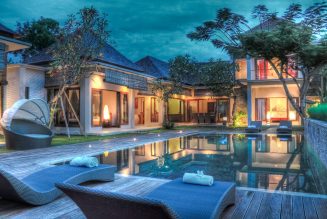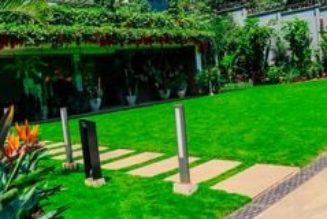
Mohamed Rabie’s Oil Painting painting, Remnants of the city at Gravitart Gallery on December 4, 2023. PHOTO | POOL
When Nature Breathes is Mohamed Rabie’s response to all the conflict, violence, and chaos that human beings have inflicted on the world. He’s especially concerned with the severe damage done to Mother Nature who was innocent until humans decided nature was expendable, when it is not.
In his first solo exhibition at Gravitart, which opened December 3, 2023, Rabie takes the side of nature, advocating for its renewal. But well aware that humans are not inclined to relinquish control of what they claim to own, his art takes a different turn altogether.
“When nature breathes conjures a kind of alternative reality in which the roles of humans and the natural world interchange,” Gravitart’s founder and curator Veronica Paradinas Duro explains to BDLife.
More precisely, it’s the natural world that takes charge, leaving humans to struggle with the consequences of their short-sighted choices, including everything from climate crises, floods, and melting glaciers to uncontrollable wildfires, and inexplicable pandemics like Covid-19.
Rabie creates what Veronica describes as a utopia, an imaginary realm where the artist retreats to have the freedom to create the kind of world where humans are displaced and nature takes control as a means of replenishing herself.
Yet nature doesn’t take the form of traditional landscape paintings. Instead, Veronica claims he delves deeply into nature’s essence which is where he finds her power to transcend human brutality and create beautiful semi-abstract imagery filled with colour and bright new beginnings.

Mohamed Rabie’s A Branch with leaves at Gravitart Gallery on December 4, 2023. PHOTO | POOL
His art reflects a childlike innocence, suggesting Rabie may not know how to create a realistic painting of a bird or a herd of four-legged beasts. But having graduated from the Faculty of Fine Art at Cairo University where he majored in painting, the Egyptian artist is quite intentional in his stylistic choices.
His utopian world is shaped by Rabie’s imagination as well as his memories of growing up in the ancient city of Minya, which has been the centre of commerce for centuries, even millennia. Situated on the west side of the Nile River, his homeland was always alive with the beauty of Mother Nature at its best.
That beauty can best be seen in a work like ‘Ascent to Nature’ in which he layers the role that nature plays about humans who are at the bottom of the layers. Progressively, each layer projects a more glorious view of the natural world reclaiming its land in full bloom.
Rabie’s utopian world allows for the ‘Coexistence’ of man and nature living in harmony. He created a diptych (two interrelated works) that reflects a harmonious balance of bright colours. But at the same time, nature cannot be contained in Rabie’s world. It continues to grow and change, taking over whole cities, as seen in works like ‘Remains of houses’ and ‘Remnants of the City I and II’.
These are the paintings I find most appealing because one can see those urban remains. One can just imagine how green creeping vines set out to grow which they did. But in the process, they were momentarily impeded by bricks and buildings that eventually got broken down so that nature’s creative growth wouldn’t be stopped by human impositions again.
What is also intriguing about the artist is that he also studied archaeology with scientists who dig on sites where they aim to find broken bits of the past which they use to put together to create historical narratives rather like what Rabie does visually, only in reverse.
His art suggests that Mother Nature, rather than violent wars, has the means of overwhelming a city with its invisible strength and insidious power.

Mohamed Rabie’s Coexistence 1,2 paintings at Gravitart Gallery, on December 4, 2023. PHOTO | POOL
Finally, he paints a luscious ‘Exit from the City’ in which he is no longer concerned with peaceful coexistence among nature and man. He’s enamoured instead with all the beautiful things that nature can produce. That we can see in an elegant piece simply entitled ‘Terrain’. It’s a painting that visually lifts you, layer by layer to see more divine loveliness, but starting at the bottom with one blossoming tree.
In the end, Rabie doesn’t give up on humans altogether. Instead, he counsels them with works like ‘Get out into Nature’, take ‘A walk in Nature’ and ‘Search inside Nature.’









